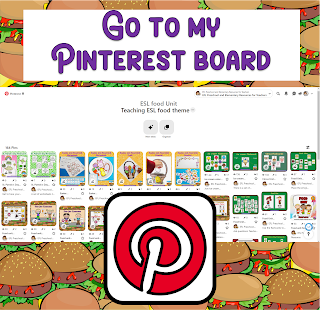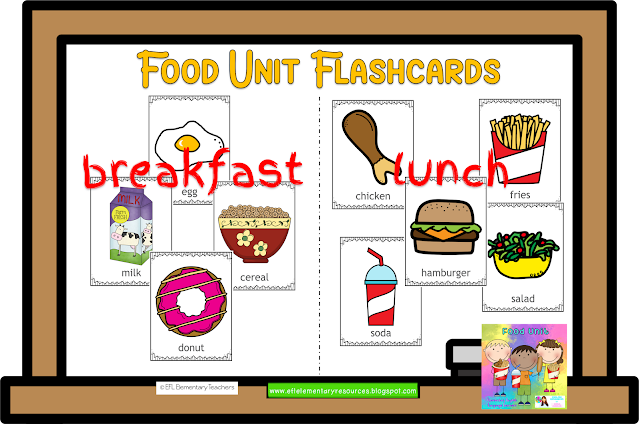This resource is part of the Food Unit for Elementary English Language Starters to prepare your bank of games and activities for your lesson plan. Perfect for any English Classroom Teacher.
Games are a valuable
and flexible teaching tool in the English Language class. Adapt the games to
suit the language proficiency of your students, to their specific needs and
abilities. Promote social competence between your learners.
Take a look of the ones
included in this resource.
This Linguistic competence game in which the students
will match the word to a picture of a food or drink item accommodates
to the different learning styles present in our classrooms. This game caters to
visual learners effectively to build meaning.
Using the same cards to play
the grammar bags. Find two lunch bags and glue the words
countable and uncountable nouns. Students will sort the cards and justify why
based on how you taught them. An easy game to promote pair or group interaction.
A similar game is with this food quilt to associate
the word to the picture.
Board games can be used to reinforce grammar rules. You can use it to review the countable and uncountable nouns, for example. Besides the board and the game pieces there is a set of cards that students will collect once they get to say if the noun is countable or uncountable. Communication systems will activate with a speaker and listener interaction.
This descriptive sentence game is fun as the students will draw what they managed to write using the cards and then transcribing on the worksheet. They can add more sentences to develop writing skills. This kind of activity encourages the use of more varied vocabulary. They can explore writing more sentences.
Print the food unit domino
tiles to promote language acquisition by engaging the students to play. They
will be speaking and interacting as the tiles come with words and pictures.
Food Unit Sentence association cards are great as a visual aid for many learners.
They will associate a sentence to any picture on the cards. Students will use
the visual context to relate to the sentences on the cards. This is an enjoyable and motivating extra activity.
Further practice as a spelling activity
using the cheese letter tiles to write the food words. Students will touch the cards
enhancing retention of the new vocabulary.



















































